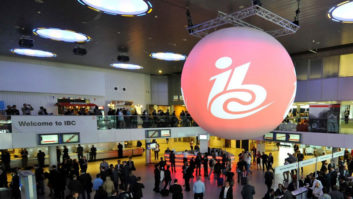With so many different platforms, so much broadcast content, and so much more choice, we live in an age where audiences have the control – and they exercise it, regularly. Online video content has never been in such demand, globally. And it shows no signs of stopping.
Recent figures have 35 per cent of Netflix and Amazon’s content as being localised to non-US markets. Netflix also recently announced it is casting its net much wider in the search for more globally-sourced content for its service, boosted by the international trend for Scandi noir-style thriller, and other internationally successful foreign language shows like Narcos.
Streaming makes accessing this original overseas programming much easier than before, and broadcasters are of course always on the lookout for hot new concepts or existing properties from other regions which can appeal to their domestic markets.
This phenomenal demand for fresh content also presents the industry with its own set of challenges, when it comes to amending original content to suit new markets, and for licensing into other regions around the world. Effective localisation is critical when it comes to effectively selling a property overseas, connecting with and developing its audience, and keeping those viewers fed with the kinds of associated video content and collateral now which are so in demand, whether Youtube snippets or social collateral.
One common challenge comes from simple translation: a message that’s brief in its original language could require far more characters to express in another. In a worst case scenario, this can lead to text punchlines being dropped from video translations due to lack of space, rendering the translation meaningless. Effective dubbing and translation requires a knowledge of both the programming content and the target language. For example, translating to Russian often requires additional time to be allocated to an audio track, as it can take longer to say than other languages.
Cultural considerations also have to be factored in. Objects and ideas hold a variety of different meanings in different countries, so it’s important that the connotations of foods and animals, amongst many other things, are carefully reviewed before content is syndicated into a region. Slang – critical to creating a mood and realism in a programme, can also prove tricky to adapt into another language. Some slang in particular can come over as especially offensive when directly translated into other languages.
These examples highlight the pitfalls which can lurk among localisation for unwary content and rights owners. Humour can be another sticking point. What’s funny and entertaining in one country doesn’t necessarily make people laugh in another. On a practical level, some jokes just won’t translate; this can be even more of an issue to address when it comes to visual gags, as communicating the humour goes beyond voiceover scripts to changing what is physically on screen. In these cases, taking a creative approach to adaptation rather than slavish word for word interpretation of content can be the best way forward. Brief subtitles can also be considered if the audience is right – they may not work well for very young children’s programming, given the reading age of viewers.

The good news is that cracking localisation doesn’t always have to involve big, sweeping changes to have a big effect. Simply taking the time to consider local sensitivities and adapting your videos accordingly can clear most of the hurdles, if you have the latitude to avoid direct word for word interpretation. Below are a few areas which should be considered when creating content assets or launching programmes into new territories:
The script – It’s not simply a matter of translating word-for-word, a script needs to be deconstructed and rebuilt with cultural considerations front of mind. Working with in-country translators and with the client’s in-house approvers is one way to ensure that local needs are addressed, and word-plays and cultural references don’t get misinterpreted.
Design and images – Particularly in kid’s TV and comedies, on-screen design elements are used to convey visual humour and narrative flow. Effective localisation can be as simple as replacing text with a textless icon, arrow or number to redirect the correct intention.
Dubbing – It is essential to understand that dubbing animation is far more complex than dubbing content for adults. For kids’ content, the choice of voice talent is significant – only experienced voice actors will be able to animate each character, convey its personality and create the illusion that the character is indeed talking! Working with voiceover talent with the correct accent, dialect and therefore pronunciation ensures an inclusive experience for your audience.
Subtitling – The need for accurate, efficient, and culturally sensitive localisation is equally as important for subtitles as it is for dubbing. Cutting corners and ‘it’s close enough’ won’t do. Diluting the language risks losing the meaning and subtleties of the original, impacting the very essence of the content.
Though launching programmes into new regions requires care and extensive research and due diligence, the dividends can more than outweigh the practicalities of localisation. Effective creative adaptation ensures content in the best position to connect and engage with the widest audience possible. Acknowledging that translation is not a simple task, and understanding the cultural climate of your audience is critical when it comes to setting new content up for the best chance of success. And as trends with the streaming services have shown – it is something which international content owners can’t ignore if they are to see their programming succeed on the biggest possible stage.







